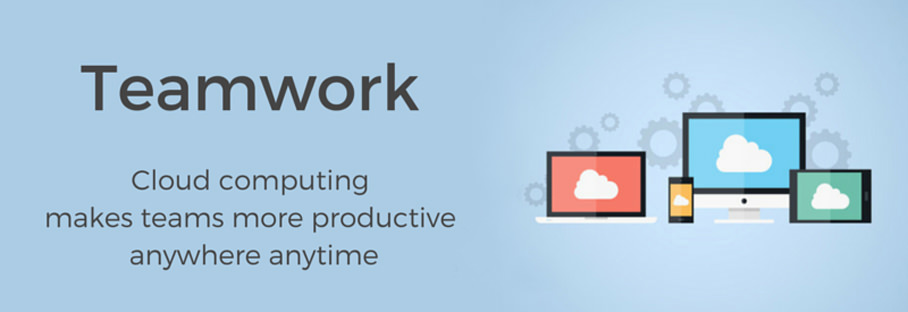
Employees are the building blocks of an organization. They work together for the accomplishment of the common objective – increasing the profit margins by delivering good quality products and services to the customers within stipulated timeframes. This will help the organizations establish themselves in their respective line of business.
This is the age of collaborative computing. With increasing competition in different sectors, the companies have to constantly strive to become leading players. Cloud computing is the most recent trend in information technology which lends multiple benefits to the business enterprises in terms of bringing down operational cost and flexibility of storing confidential information as well as accessing it from anywhere around the world.
Teamwork entails proper co-ordination and collaboration among the members of a team so that they can accomplish the assigned tasks seamlessly. Cloud computing enables a geographically distributed team to access their work files from any place, other than the office premises. This holds great relevance, especially for the field employees as they cannot be present in office all the time. Thus, they can perform their tasks efficiently, without any adverse effect on work. Accessing certain applications through cloud computing will further help the team members to collaborate in a better way either in person or virtually.
Before the advent of cloud computing, the team members were required to be present in office premises working for long hours to complete the work and meet stringent deadlines. This posed problems for some team members especially those who had to commute long distances and had dependent children or adults at home. Now, these problems are slated to become a thing of the past with cloud computing giving the team members the flexibility of contributing to work from home. This in turn, results in enhancing productivity of the business enterprise, taking it closer towards its business objective.
Collaborative tools in the market today help the team members to create, and simultaneously edit documents and spreadsheets. Google drive is one such cloud storage collaborative tool, which allows many people to edit the same document or file. As users of Google drive, when you share a document, the other members can view the document and also edit it on the basis of access permissions granted. The tool allows the team members to leave their comments and suggestions specific to the document viewed or edited.
Earlier, the team members had to give a lot of time in creating and maintaining spreadsheets and maintain individual copies which then had to be sent across to bring everybody on the same page. It was a cumbersome procedure for the employees. Many a times, owing to internet connectivity issues, the team members had to spend time in rework for duplicating the documents.
Today, collaborative tools such as Google drive allow the team members to create, update, consolidate as well as save their spreadsheets. These Google spreadsheets make change control simpler without the members worrying over internet connectivity problems.
Cloud-based project management tools save the team members the time and efforts in sending files and documents through email. With the help of these tools, the members can be assigned tasks, the status of the task such as Not Started, Work in Progress, or Completed shows whether the members have started working on a task and when the tasks are completed. For example, Asana is a cloud-based collaboration tool which allows the team members to manage projects and tasks online but does not require them to send emails. Using this tool, the team members can carry out their tasks, wherein they can add comments, tags and also notes.
To be successful in their lines of business and achieve their business goals, the companies diversify their workforce in teams, with each team assigned specific tasks and activities to perform. As a result, business processes run smoothly and efficiently leading the business enterprises towards the business goal.
